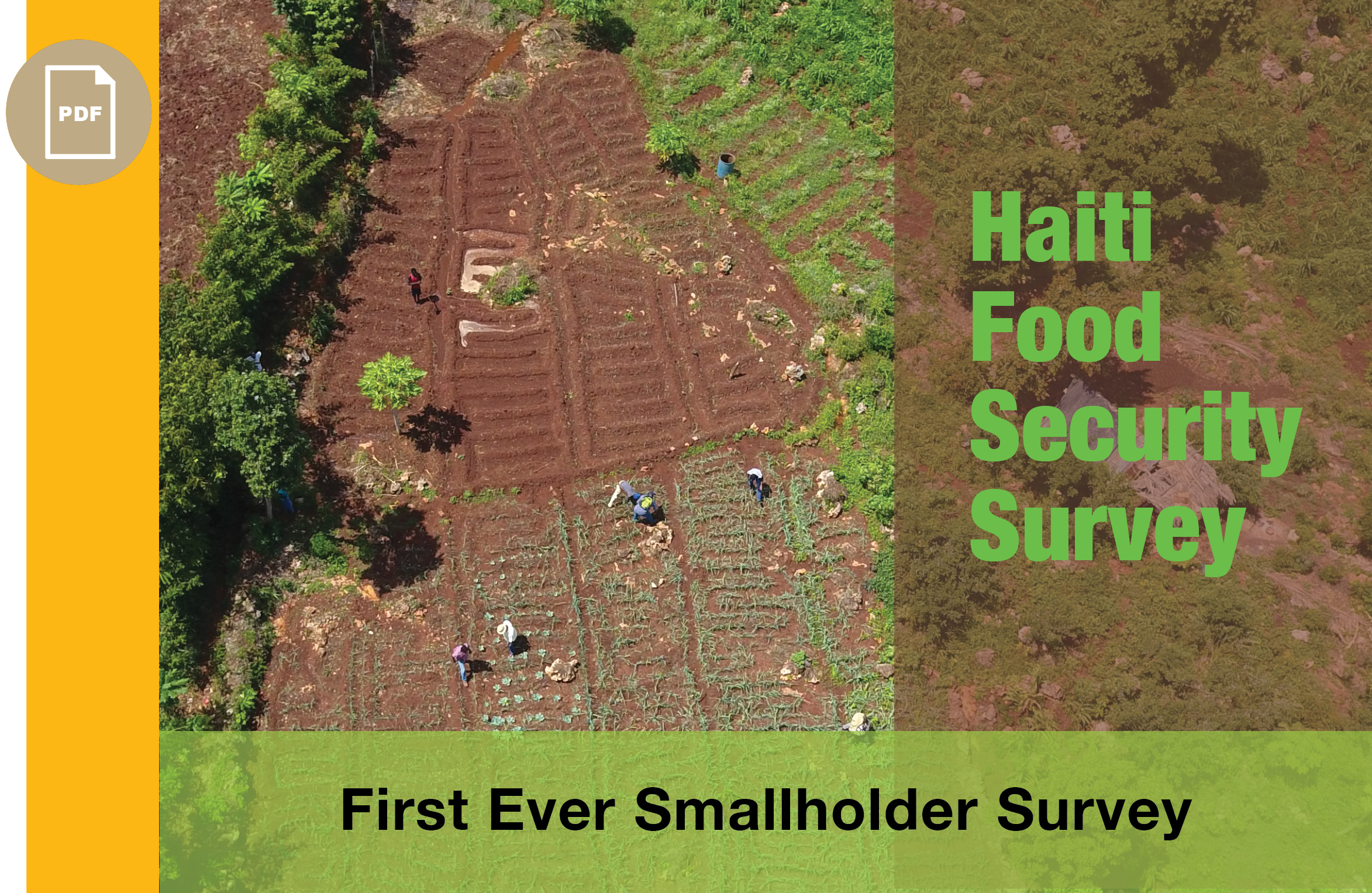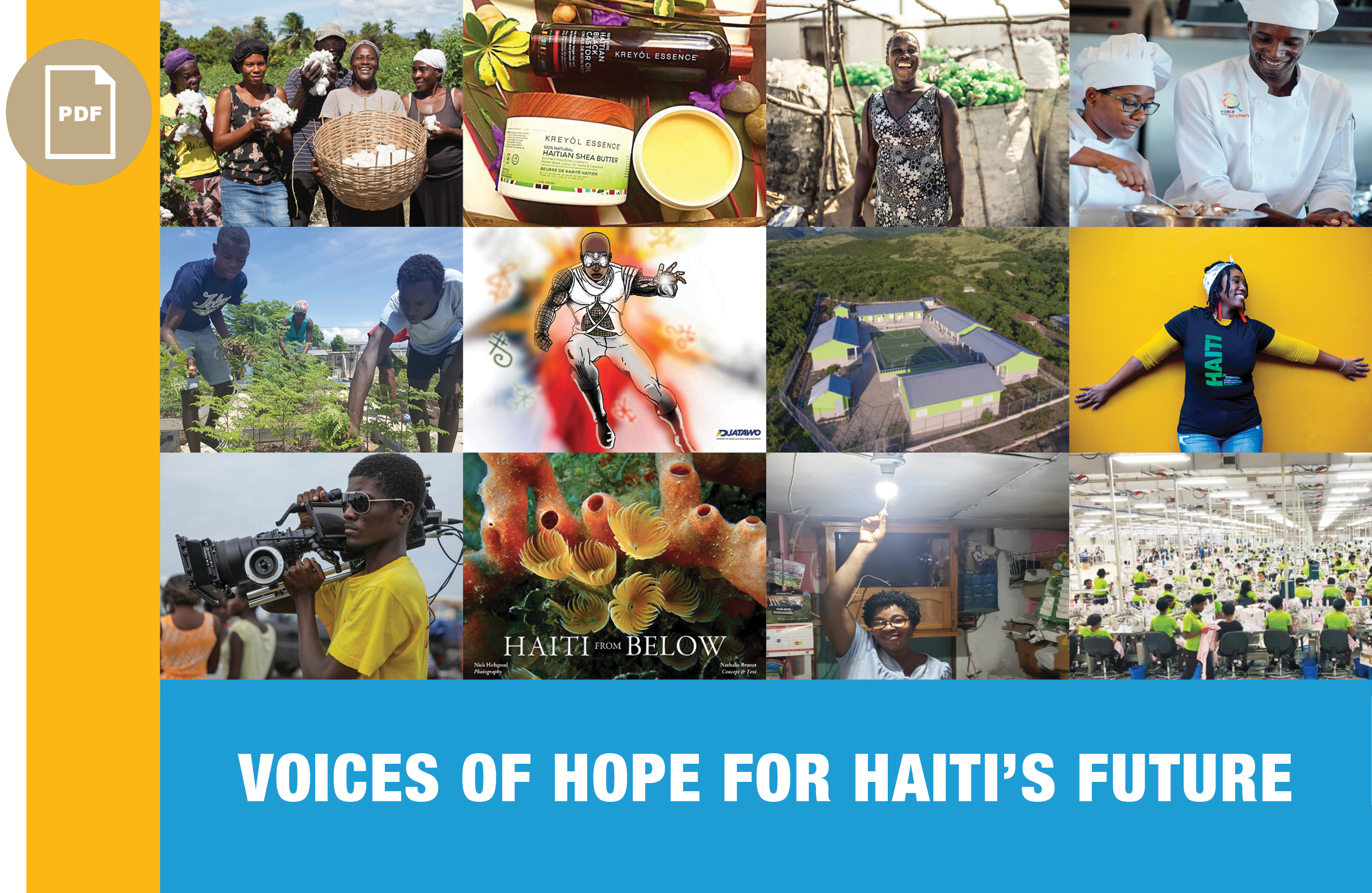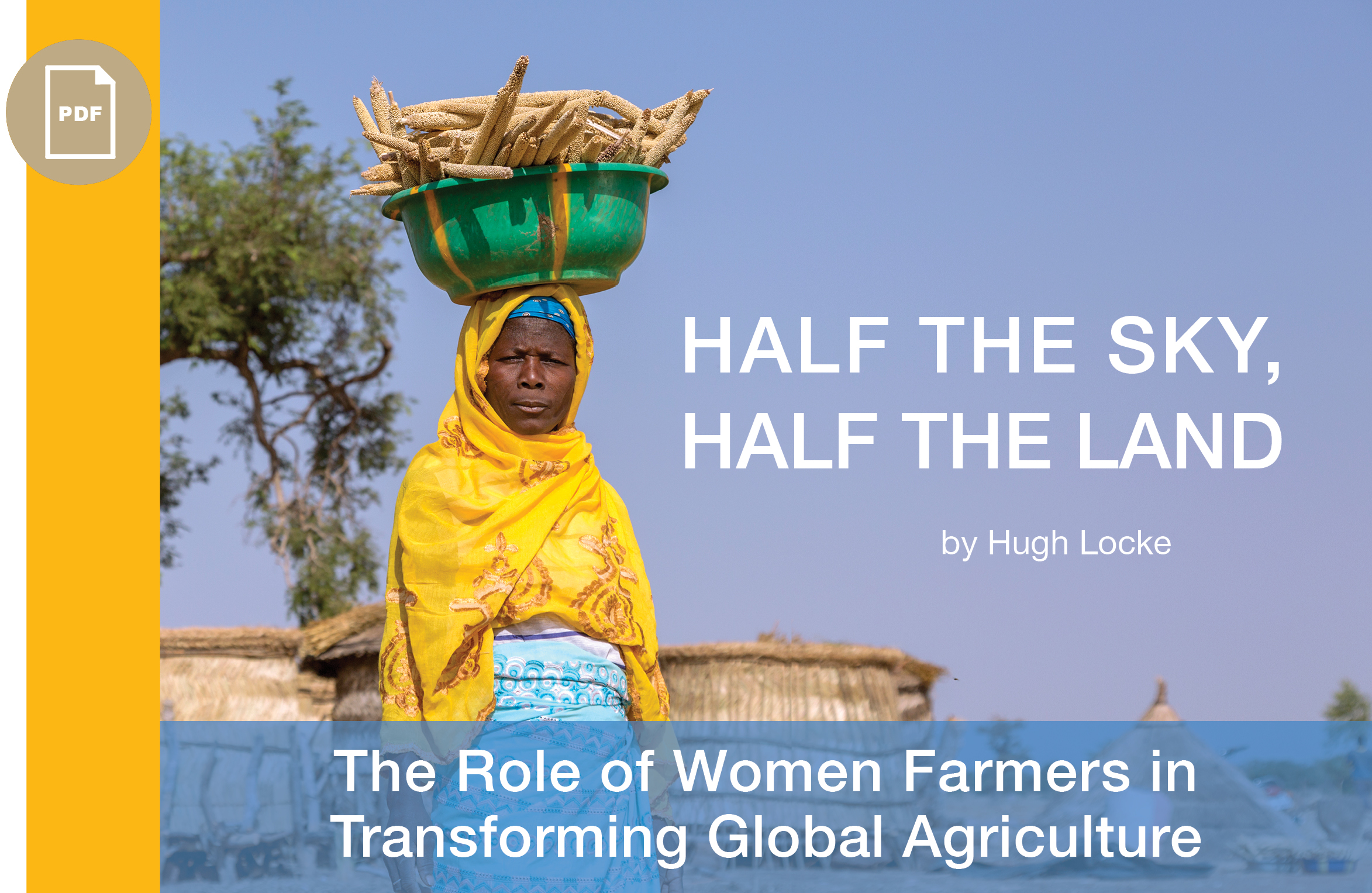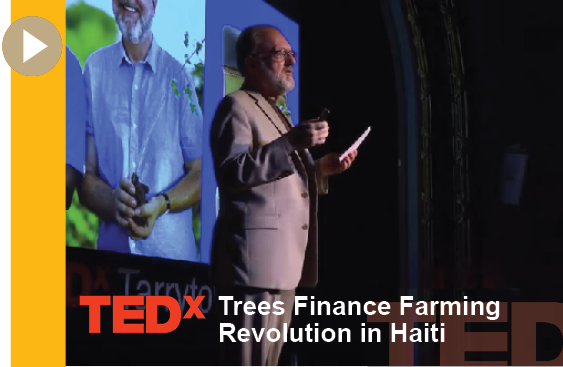 Saturday, April 6, 2013 |
Saturday, April 6, 2013 |  Hugh Locke
Hugh Locke The Mystery of Disappearing Foreign Aid to Haiti: Where Did the Money Go?
Tent camp in the Haitian capital of Port-au-Prince following the 2010 earthquake. Photo
by Sebastian Petion.
In a new report from the Center for Economic and Policy Research, authors Jake Johnston and Alexander Main set out to track the $1.15 billion pledged to Haiti by the U.S. government following the January 2010 earthquake. They found that the "vast majority" of the money went straight to U.S. companies and NGOs, with only 1 percent going directly to Haitian companies. I would like to contribute to this discussion by sharing an excerpt from my book “The Haiti Experiment” in which I set out to track how $13 billion was spent in the 29 months following the earthquake. This is the total amount of money from all sources, including the U.S. and other countries, that was actually spent assisting Haiti. And like Johnston and Main, I content that most of that money ended up back in the countries it came from—in the hands of private contractors and NGOs.
Excerpt from “The Haiti Experiment,” pp. 175-183:
HAITI, 2012. Haiti is part of the Western hemisphere by geography, and the Caribbean by culture and tradition. But in reality, it exists in a world apart from both. After slaves rose up en masse and defeated Napoleon’s army, the major powers of the day, in an effort to limit the contamination of slave revolt, mounted a long and coordinated campaign to isolate the new nation. Other countries in the region suffered under colonial occupation, but only Haiti was brought to the verge of bankruptcy by having to buy back its own citizens from France. Many nations in this part of the world have endured foreign intervention, but after 19 years of US occupation (1915 to 1934), Haiti was left without local, regional, or national capacity to govern, while burdened until 1949 with paying the interest on loans taken out to make slave payments to France. While other countries in the hemisphere have faced the indignity of domestic dictatorships that were bankrolled from abroad, only Haiti was left with an economy that is still largely based on foreign aid.
But, as explained in Chapter 1 about the history of Haiti, foreign intervention is only half the story. Those forces alone would not have been sufficient to deliver Haiti to its current state, had they not been aided and abetted by the deep divide between the minority mixed race elite and the majority poor black population. This great social divide has plagued the country from its inception on January 1, 1804 to the present day, factoring in every step of Haiti’s tortured history.
The combined external and internal forces that have beset Haiti for more than 200 years have also made it more vulnerable to natural disasters, such as hurricanes and earthquakes, and ensured that the inadvertent introduction of cholera would become an epidemic rather than an outbreak.
There are few nations on earth that, while technically democracies, are so completely run by outsiders. The country’s economy and the delivery of most of its basic services are in the hands of a shadow government. The money to run the country comes mostly from foreign donor governments that decide how it will be spent. These governments, in turn, give the money—supplemented by public donations during periods of crisis—to foreign NGOs for social services, to foreign private contractors working on infrastructure projects, to the United Nations to provide security through the deployment of peacekeeping troops, and to the UN’s World Food Programme to supply 6 percent of the country’s food.
Haiti is a failed state. This is the technical term when a country’s government is so weak or ineffective that it has little real control over its own territory. Breaking it down further, a failed state means that a government is unable to provide public services, has little management of its economy, is plagued by widespread corruption, patronage, and inefficiency, and is without the capacity to ensure public order. The litmus test of whether a state has failed is always at the community level. In poor areas throughout Haiti, residents turn to NGOs for health services, to the World Food Programme when there is a food shortage, to foreign contractors for jobs, and to UN peacekeepers when gunfire erupts. This, despite their distrust of foreigners and because this is simply the reality on the ground.
This litany of malaise is not the fault of any democratically elected governments in the past two decades, including the current one. Despite their best efforts, none of these governments has been able to overcome Haiti’s unofficial “international receivership” status and the consensus within the international community that Haiti is beyond hope and that no amount of aid is going to do anything more than prevent the country from becoming the geopolitical equivalent of a black hole. Neither is Haiti’s situation the fault of the individual NGOs that have valiantly, often in the face of tremendous hardship, managed to deliver public services that millions of people depend on. The problems, however, are all too real and the effect on the population all too devastating.
Follow the money
Lest the reader think that this is too dramatic and overstated, let me share with you a short analysis of the money coming into Haiti since the earthquake.
First, how much money are we talking about? To get a realistic picture, you need to look at how much money it takes to run the country and where that money comes from. The following figures cover the period from January, 2010 (when the earthquake occurred) to May, 2012—29 months in total, or one month short of two and a half years.
Public donations from foreign governments total roughly US$6 billion over those 29 months. Note that this refers only to money spent and not what has been pledged, but is not yet disbursed. During this same period, private charitable donations to NGOs for work in Haiti totaled some US$3 billion.
Apart from the above-mentioned US$6 billion, foreign governments donated an additional US$1.9 billion to cover the cost of the UN’s peacekeeping mission (known by its French acronym, MINUSTAH), for the 29 months. Governments also donated US$482 million to the World Food Programme (WFP) during this period, money that was used to purchase and distribute 6 percent of the food consumed in Haiti. MINUSTAH and WFP, respectively, provided these figures. In the interests of accuracy, US$118 million of the funding to WFP is deducted from the running total, because it is already counted as an emergency contribution in 2010 as part of the US$6 billion amount from governments.
In recent years, the operating budget of the government of Haiti has consistently depended on 60 to 70 percent from foreign aid and only 30 to 40 percent on revenue from taxes, loans, and other sources. Combined aid and revenue expenditures for the 29 months came to approximately US$3.8 billion. But discounting the 60 percent aid portion—because it is counted within the US$6 billion from foreign governments—only the revenue portion gets added to the running total: US$1.54 billion.
In order to get a complete picture, I would estimate that the rest of the UN operation in Haiti (not including MINUSTAH and WFP) has involved the expenditure of around US$185 million. This is only a conservative estimate; the actual figures are all but impossible to gather. I am including the UN here, because the various agencies such as UNICEF, the UN Development Programme (UNDP) and others all contribute to the effective provision of public services in one way or another.
Adding it all up, the total cost of running Haiti for 29 months is roughly US$13 billion. Of that, US$11.5 billion, or 88 percent, is foreign aid, both public and private. The government of Haiti had direct control over the disbursement of only slightly more than 29 percent of the money used to run the country, of which 60 percent came from foreign donors. Looking at it another way, the government of Haiti’s direct revenue accounts for only 12 percent of what it costs to run the country.
There comes a point where common sense trumps any possible explanation or economic theory regarding a situation like that of Haiti. No sane person living in, or visiting the country, could state with confidence that US$13 billion—which translates to an average of close to US$15 million a day, 7 days a week, over 29 months—has made a significant contribution to improving the lives of the majority of ordinary Haitians. Yes, there has been some progress, even pockets of significant improvement, but nothing even remotely commensurate with this level of funding.
So where did the money go? The bulk of it went to five sources: foreign NGOs, foreign private contractors, two UN operations (MINUSTAH peacekeepers and the World Food Programme), and the US Department of Defense. Whether or not they represent services that would better be provided by a well-functioning government, the expenditures for MINUSTAH peacekeepers and the World Food Programme are transparent. The funding they receive corresponds directly to services provided. The same is the case for the Department of Defense being repaid for its impressive security operation, which included reopening and managing the airport in Port-au-Prince and helping to maintain security in the capital. More challenging is tracking the foreign aid channeled through NGOs and private contractors.
It is often said that only 15 to 25 percent of aid provided by foreign governments ever makes its way to those it is intending to benefit at the local level in any developing country, including Haiti. This is not a scientifically derived number, but a rule of thumb used by development professionals familiar with the field. And while it cannot be the sole basis for drawing conclusions, this informal percentage can be a starting point for looking at a problem very much at work in Haiti, but one that is endemic to the entire field of development aid.
To understand the process, you first have to realize that development aid is no longer a direct transfer of money from a rich country to a poor country. Regardless of the military, political, or security reasons one country gives money to another, and what the donor expects in return, the actual transfer of the money has become a process in and of itself. This is where NGOs and private contractors come in. Donor funding begins its journey from a rich country to a poor country by entering a complex “development money management system” that was originally intended as a way to ensure efficiency and accountability, but which has become as dysfunctional as subprime mortgages or the banks that backed them. The money that enters the system is not managed efficiently, and ultimately does not equal the services provided on the ground in developing countries. A theoretical example is the best way to explain how it works.
Assume government “A” decides to give Haiti a grant of US$150 million. In this fictional scenario, the funds are intended to improve watershed management, in one agricultural region of the country, by working with 18,000 small-scale farmers over a three-year period. The money goes to government A’s overseas aid department, in which the staff undertake a study to determine the needs on the ground because they are not able to use existing data—it’s a rule somewhere. The study turns out to be a bit more expensive than planned, because they can only use research firms from country A (another rule); on top of that, the researchers end up having to subcontract much of the work when they get on site, because they are unfamiliar with the location. Armed with an expensive study, the overseas aid department next finds an NGO or private contractor to be the recipient of the grant; but that recipient must be from country A (a rule). So the first thing the NGO/contractor does is to extract an overhead amount at their headquarters operation in country A for oversight, management, accounting, and travel to Haiti. The Haiti office of that NGO/contractor then needs to scale up; so they take out some funds to add staff and cover overhead. But each staff person requires a vehicle, and these can only be purchased in country A and shipped to Haiti. No used vehicles are allowed (an insurance rule), which adds to the overall cost. Each vehicle will need to be driven by one dedicated driver per vehicle, and each vehicle needs to have a dedicated security person to be in the front passenger seat at all times: so more staff is hired. All of these expenditures need to be overseen by a Haitian accounting firm. The NGO/contractor does not, of course, actually implement the grant themselves. They hire consultants, preferably from country A, who help them find smaller NGOs, local Haitian organizations and various faith-based groups to serve as subcontractors. Each subcontractor must take out overhead and management costs, and they each require a vehicle that must be purchased in country A and shipped to Haiti. Each subcontractor must also have their own external accounting firm to work with the main NGO/contractor’s accounting Haitian firm, which, in turn, works with the accounting firm in the headquarters of the NGO/contractor in country A working with government A’s auditors. The subcontracted NGOs and local groups in Haiti do not actually do the work, of course. They, in turn, subcontract to the associations that all small-scale farmers in Haiti are members of. Each association quite reasonably takes out a percentage for overhead and administration, and what is left of government A’s grant is finally disbursed to the farmers to do the work. If each layer in the filtering system takes out between 7 and 10 percent, you begin to see where the money goes.
The 18,000 farmers doing the actual work of watershed management in this fictional account will be engaged in planting trees, terracing slopes, digging irrigation ditches, stabilizing river beds, and other related activities. Let’s say they work full time for two and a half out of the three years of the grant period. Based on the premise that 25 percent of the grant reaches the final beneficiaries, this translates to US$3.20 a day for full-time work. Over the course of two and a half years, each participating farmer will receive US$2,083 out of US$150 million.
This raises a question: why would politicians in country A not be horrified when reviewing the final report of how taxpayer money was used? The answer is that the money is justified by statistics in official reports. As long as those statistics look good, everyone on the donor side is happy. As you might expect, every step in the development money-management system is designed to generate statistics. This adds more costs at every step. More importantly, it greatly affects the final operation on the ground, since every action must translate to an inflated statistic that justifies the funding, even if it means that the program being funded is not as effective as it could be.
But if the generation of statistics is built in to such a degree, why does this not result in a complete picture? In the final report, the statistic about each farmer getting paid US$3.20 a day would be almost impossible to find. Instead you would see that support was provided to 18,000 farmers who had an average family size of 5.7 (official UN statistic for Haiti) and so the “impact” of their income would accurately be recorded as having benefited 102,600 people and not 18,000. The participating farmers all live in communities where a further 200,000 people received secondary benefits through increased local commerce, and that is further recorded as part of the overall impact. The tree seeds that the farmers planted would be recorded as if they all grew into mature trees, even though most would never germinate because of a decision that it was too expensive to grow the seeds in tree nurseries. The terracing of slopes will get translated into the impact of each terrace on the total acreage of the farm on which it was created, even though only 10 feet of the terrace might cross one end of a farmer’s field. The irrigation ditches will be measured by the impact on all the fields served by the larger irrigation system, even though the ditches built by the program correspond to only a fraction of the existing system that was built entirely by others. And so on. Translating programs into happy statistics has become an entire industry.
Each layer in the development money-management system extracts a percentage along the way. But the story does not end there. It is necessary to factor in the impact of duplication and disappearance in reducing the overall impact of development aid. Many of the programs being funded overlap with other similar programs. But in Haiti, as in other countries, there is almost no coordination between the various governments that provide money; hence, the duplication. Another norm in foreign government funding is that most of the programs are only designed to last as long as the funding flows. Once the funding stops, the program disappears along with any trace that it ever existed. Failure to build the capacity of the implementing NGOs, or the corresponding Haitian government ministries, means that once development aid stops for a given program, there is no one left who knows how to manage the operation or generate the revenue needed to continue.
As it stands now, there are only two points at which government donor funding is monitored: before it enters the development money-management system and when it “emerges” in the form of performance statistics. Along the way, the various NGOs and private contractors are not required to tell the government of Haiti what they are doing, or to be transparent about how the money is being used: they answer only to the government providing the funds.
This is not intended to be an indictment of a vast network of co-conspirators, but a simple story of how a system that was created in the 20th century with the best of intentions has gone wildly out of control in the 21st. Everyone thought it would be self-correcting by virtue of the number of checks and balances that were built in. There is no conspiracy to be routed out, but rather incremental steps by large numbers of people in many countries, collectively and over time, that have created an incredibly complex system that is entirely without the capacity to adapt in a meaningful way. Change will come about only by intervention. And now is the time for that intervention.
From The Haiti Experiment by Hugh Locke, 2012, Hawkeye Publishers, New York












Reader Comments (1)
its a shame how corrupt our world is. to steal from the mouths of children...My God!